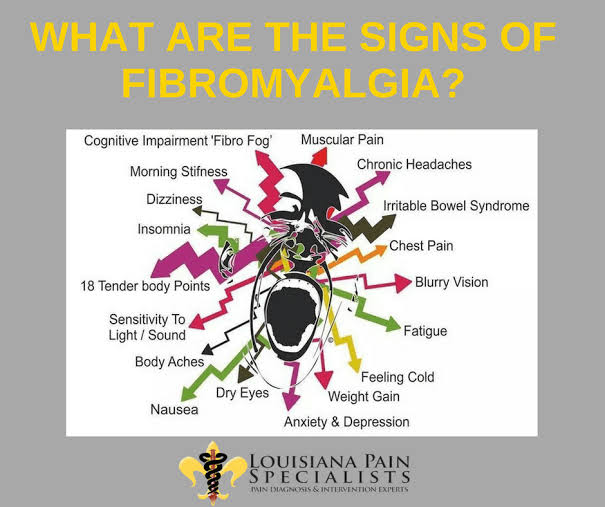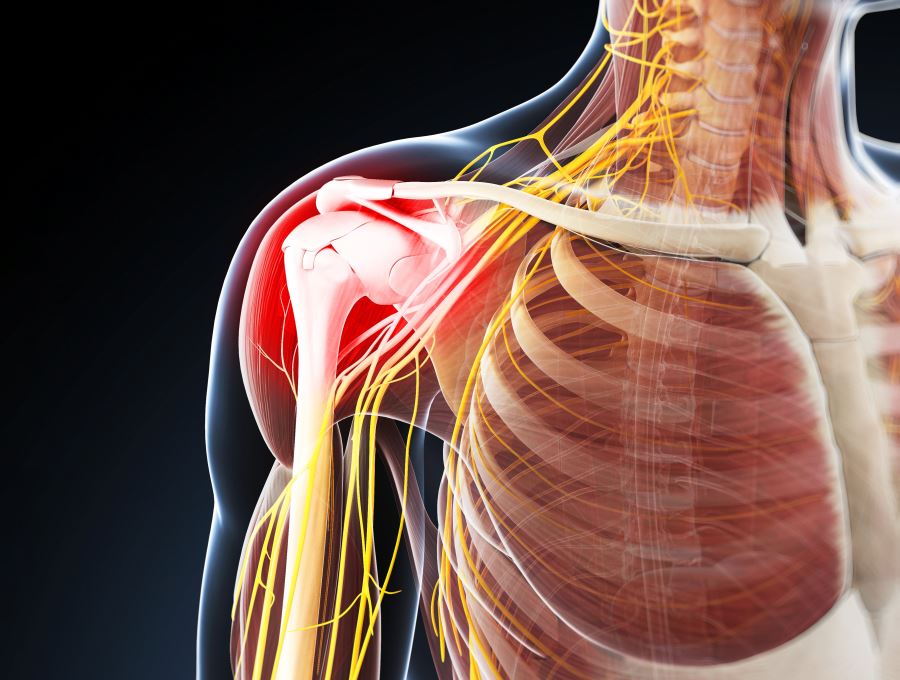
Fibromyalgia is fibromyalgia, a common and chronic syndrome that causes physical pain and mental distress, and symptoms of fibromyalgia can be confused with symptoms of arthritis, however, unlike arthritis, it has not been found to cause joint or muscle damage or damage, and it may be from This condition is difficult to understand, even for healthcare professionals, as its symptoms are similar to those of other health conditions, and there are no real options to confirm the diagnosis. As a result, fibromyalgia is often misdiagnosed, and fibromyalgia is still difficult to treat. But there are some medications, treatments, and lifestyle changes that can help you manage symptoms and improve a patient’s quality of life. In this article, we’ll explain all the information about fibromyalgia.
Symptoms of fibromyalgia (fibromyalgia):
- Pain spreading all over the body
- Jaw pain and stiffness
- Pain and fatigue in the facial muscles and adjacent fibrous tissues
- Joint and muscle stiffness in the morning
- headache
- Irregular sleep patterns
- irritable bowel syndrome
- painful menstrual periods
- Tingling and numbness in the hands and feet
- restless leg syndrome
- Increased sensitivity to cold or heat
- Difficulties with memory and concentration
- vision problems
- feeling nauseous
- Pelvic and urinary problems
- overweight
- Dizziness and unsteadiness
- Cold or flu symptoms
- skin problems
- depression or anxiety
- Breathing problems
Fibromyalgia haze:
Fibromyalgia fog, also known as “fibro fog” or “brain fog,” is a term that some people use to describe the mysterious feeling they feel. Signs of fibro fog include the following:
- Poor memory
- Difficulty concentrating
- Trouble staying conscious and focused
Symptoms of fibromyalgia (fibromyalgia) in females:
The symptoms of fibromyalgia in general are more severe in females compared to men, women suffer from more widespread pain and symptoms of irritable bowel and nausea compared to males, and the menstrual cycle is very painful, and the arrival of women to menopause causes an exacerbation of the condition of fibromyalgia, which To complicate matters further, some menopausal symptoms and fibromyalgia appear nearly identical.
Fibromyalgia in males:
Men also develop fibromyalgia, however it may remain undiagnosed because the disease is seen to affect women more than men.
Men also experience severe pain and emotional symptoms of fibromyalgia, and this condition affects the quality of life, function, and relationships between men.
Fibromyalgia pain:
Pain is the hallmark of fibromyalgia symptoms, and you will feel it in various muscles and other soft tissues around the body. The pain can range from mild pain to severe discomfort that is difficult to bear. Fibromyalgia appears to be caused by an abnormal response of the nervous system, and the body overreacts to Things that should not normally be painful.
chest pain
When the pain of fibromyalgia is in the chest, it can be similar to the pain of a heart attack, and the chest pain associated with fibromyalgia is concentrated in the cartilage that connects the ribs to the breastbone, and the pain may spread to the shoulders and arms.
Symptoms of fibromyalgia chest pain include:
- Sharp chest pain
- Feeling stabbed in the ribs
- Burning sensation in the chest
Back pain :
Fibromyalgia causes severe pain in the lower back, and this pain may resemble pain caused by arthritis, and it may be confused in the diagnosis, but other symptoms such as brain fog and fatigue can help determine the cause of fibromyalgia.
Low back pain exercises with pictures.
leg pain
Fibromyalgia can also be felt in the muscles and soft tissues of the legs, and the leg pain can be similar to the pain of tight muscles or stiff arthritis, and fibromyalgia in the legs can be like numbness or tingling, and it may also cause a feeling of heaviness in the limbs and difficulty moving the legs.

Fibromyalgia fibromyalgia
Causes of fibromyalgia:
The exact cause of fibromyalgia is not clear, but there are a range of potential risk factors, which include:
- A stressful physical or emotional event or trauma such as a car accident.
- Frequent injuries as they can cause hormonal changes that may cause fibromyalgia.
- Rheumatoid arthritis or other autoimmune diseases,
- Central nervous system problems.
- Genetic factors
- Infection. A previous illness can cause fibromyalgia or make its symptoms worse. Influenza, pneumonia, and gastrointestinal infections, such as those caused by salmonella and Shigella bacteria, can cause fibromyalgia.
Treatment of fibromyalgia (fibromyalgia):
There is no specific treatment for fibromyalgia. Instead, treatment focuses on reducing symptoms and improving the patient’s quality of life by:
- pharmaceutical
- self-care strategies
- Lifestyle change
- Acupressure
- behavior modification therapy
- Chiropractic care
- Psychotherapy
- massage
- Low-dose antidepressants to improve mental state
Medicines can relieve pain and help the patient sleep better. Physiotherapy improves muscle soreness and reduces stress on the body. Some exercises and stress reduction can help you feel better mentally and physically.
Medicines:
Common medications for fibromyalgia include:
1Pain relievers:
Over-the-counter pain relievers such as ibuprofen or acetaminophen can help relieve pain.
2Narcotic drugs:
Like tramadol, which is an opiate, which helps relieve severe pain.
3– Antidepressants :
Antidepressants such as duloxetine are sometimes used to treat the pain and fatigue caused by fibromyalgia. These medications may also help improve sleep quality and work to rebalance neurotransmitters.
You can get rid of depression in these safe ways.
4Anticonvulsant drugs:
Gabapentin is used to treat epilepsy, but it may also help reduce symptoms in people with fibromyalgia, as it reduces seizures and spasms.
There is no definitive cure for fibromyalgia, but more treatment options and clearer diagnostic criteria are now available, and symptoms can improve significantly, as long as the patient follows his or her treatment plan.






